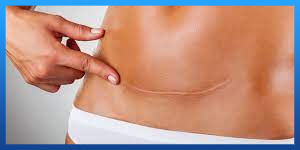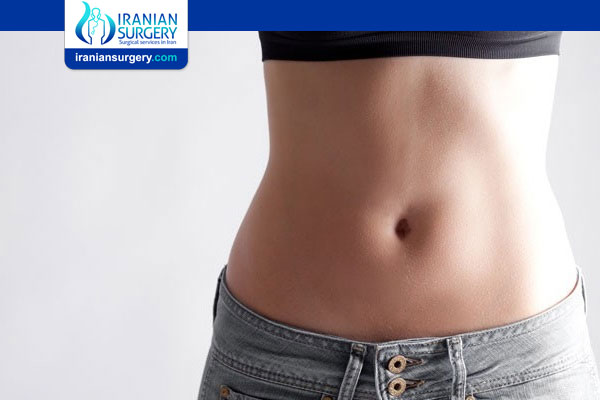Swelling after Tummy Tuck
Swelling after a Tummy Tuck is normal
It’s important to note that swelling in the abdominal area is mostly expected following a tummy tuck. The main reason is related to lymphatic vessels and the blood vessels in this area of the body. They work as a drainage system for fluids. When you undergo this operation, both the blood supply of the surgical area and the lymphatic system are influenced. Since this operation needs some incisions along the pubic area, the skin above it, as well as the blood vessels, will be manipulated. Thus, the blood may not reach this area easily. Then, the skin will be swollen gradually as a reaction.
In addition, as the lymphatic system, which is responsible for the drainage of the fluid, is cut and altered, fluid accumulation might happen. The fluid might accumulate in the abdominal area or somewhere close to your legs and thighs. That’s why some candidates report leg swelling during their recovery process. To prevent this, patients should have drains for a few days after the surgery.
Swelling is usually at its worst for the first two months after a tummy tuck, though every individual is a little bit different. As the body repairs lymphatic vessels and blood, the swelling continues to resolve. This healing process might take up to a year or longer to complete, so it is normal to see minor swelling by that time.

The amount of swelling experienced following your tummy tuck operation can also vary depending on the method you choose. A mini tummy tuck (drainless tummy tuck) usually results in less recovery time and swelling than a traditional tummy tuck. Alternatively, adding liposuction to a tummy tuck may produce swelling in other areas of the body as well.
Read more about : Tummy tuck scars after 5 years
Read more about : How to smooth out stomach after liposuction?
How to reduce post-operative swelling?
There are several tips to deal with swelling of the tissues following a tummy tuck.
- Find an experienced surgeon and follow the instructions carefully
Post-op complications depend greatly on the surgical operation itself. To have an easier and shorter recovery, you have to find a highly knowledgeable and experienced surgeon who can predict and manage your treatment course at its best.
For decreasing swelling in abdominoplasty, the less the doctor ruptures or manipulates the tissues, the better. Therefore, you are suggested to choose your surgeon and tummy tuck destination wisely. The post-operative phase is more important than the surgery. So, listening to your doctor and following their bits of advice is essential. Upon your doctor’s prescription, you should take certain medications to reduce inflammation and swelling.
- Wear a Compression Garment for about Two Weeks
A compression garment can help you handle swelling by applying pressure and limiting the amount of fluid in the surgical zone. A good (too loose or not too tight) compression garment – whether it is a lipo garment, Spanx, or girdle– will also put gentle compression on the tissues and decrease swelling. Drains, normally a necessity following tummy tuck operation, syphon off the fluid that would accumulate under the skin. Ensure they are working properly. Strip them every hour, empty every eight hours, and record the drainage in ccs. Clean off around the drain entrance sites on your skin by alcohol at least twice a day. Compression garments serve many purposes to help aid your recovery following a tummy tuck, lipo, or body lift. Some of the main benefits include:
. Reduced swelling: If you are wondering how to decrease swelling following a contouring operation, a compression garment will do just that. It can help restrict the edema that occurs after surgery by applying firm pressure to the area.
. Lower risk of bruising and bleeding: Wear post-op garments are shown to decrease hematoma and reduce the chance of postoperative bleeding.
. Speeds the healing process: Candidates who wear compression garments following body contouring surgery might be able to start their normal daily activities sooner than those who do not. They can enhance oxygen levels in soft tissue, allowing faster tissue repair. Some brands even have perforated material that touches only some parts of the skin to increase blood circulation, which promotes faster recovery.
. Shapes & contours: A compression garment can support and reinforce your new curves as you heal. For instance, after abdominoplasty wearing one is especially beneficial for patients with poor skin elasticity since after-surgery garments promote skin retraction.
. Potentially reduced risk of keloid scarring: Keloids may form when excess scar tissue grows over a healed wound. Compression therapy is the first line of defense against keloids because it can soften and break up keloid scar formations.
. Reduced infection risk: Like a Band-Aid, a compression garment could shield your skin from outside germs like a barrier. It protects the wound while you heal.
. Less pain & discomfort following surgery: Gentle pressure and support can relieve pain symptoms. For instance, think about when you bang your shin. Your instinct is to apply pressure to the site with your hand since it makes the injured area feel better. The same principle applies following trauma from a surgical operation. Again, the key is gentle pressure.
Read more about : Fever after tummy tuck
- Consume a Well-Balanced Diet
Healthy food can accelerate your recovery for sure. You can handle the swelling by adding high-fiber foods, fresh fruits, and grains to your daily diet. Also, drink water as much as possible which can stop the fluid accumulation. There are several tips for diet following a tummy tuck.
Foods to avoid after tummy tuck
. Processed foods: Since they promote inflammation to a great extent, patients should prevent eating them, especially carbohydrates like bread, cereal, and rice.
. Alcohol and cigarettes: They slow the body’s healing period and also thin the blood. Physicians suggest avoiding alcohol and smoking generally from 2 weeks before to 3 weeks after the operation.
. Salt: Prevent salty foods for at least two to four months after the tummy tuck. This is mostly because they might cause body bloat and nobody wants that following a tummy tuck!
. Fat: “Fat is the enemy!” You have undergone tummy tuck becsue you wanted to get rid of your fats; if you expect a promising outcome, you should accept the restrictions in your diet and take a different lifestyle including exercise and nutritional considerations on the top.
However, “not all fat is bad!” Bad fat (saturated fat) is solid at room temperature and exists in most animal products, as well as processed foods and fried. Just because fat deposits were removed, it does not necessarily mean that all kinds of fats are bad. A healthy amount of good fat is crucial for your health. The valuable sources of good fat are olive oil, nuts, fruits like avocados, and grains.
. Soda: It leads to gas and bloating.
Foods to eat after tummy tuck
. Water: Drinking plenty of water following tummy tuck surgery can help the body heal faster. Loss of water, as well as narcotic pain medications and low-fiber diet, cause constipation, and this, in turn, may lead to abdominal pain. Plain water, fruit juice, light tea, and soups made from fresh and lean meat are suggested for the post-op tummy tuck diet.
. Carbohydrates: They help restore body strength and accelerate the recovery process. They avoid muscle loss and stimulates the rejuvenation process. Whole grains, oatmeal, brown rice, etc., are good sources of healthy carbohydrates.
. Vitamins: Taking vitamins A and C after the operation will ensure optimal healing of the incision, aid skin regeneration, and decrease bruising and the risk of infection. Vitamin A is found in eggs, cod liver oil, and dairy. Vitamin C is found in citrus, leafy greens, strawberries, and tomatoes.
. Proteins: Protein is a key parameter in building new cells and structures efficiently throughout the entire healing process. It is found in eggs, lean fish, lean meats, beans, seeds, nuts, dairy products like yogurt, etc.
- Use Drain Tubes
Drains are often used during or following surgery to help the body expel fluids that collect at the surgical site. Abdominoplasty, or tummy tucks, are no different and patients will have one or two temporary tummy tuck drains inserted after the operation.
Although it might sound weird that your body needs to be drained after tummy tuck operation, it’s important to perceive draining is necessary to help your body heal from the surgery and prevent infection.
Tummy tucks eradicate excess skin that’s left behind after weight loss. Females, who have finished having children, are probably the most common tummy tuck candidates followed by individual who have achieved remarkable weight loss. Losing that extra skin is like a huge success after working hard to get to a normal weight!
It’s common for the body to send fluids to an injured site, and surgery injures the body even if it’s repairing something inside. These fluids lead to pain and swelling, but it’s the body’s way to cushion an injured site. The body can drain fluids on its own after minor injuries, but after surgery, it often floods the surgical site and can’t drain fluids fast enough.
Drains speed up the process and prevent additional swelling and infection and in turn help with faster healing. They are thin, clear silicone tubes that are inserted through very small incisions behind the main incision. They reach into the zone between the ribcage and pubic region, or a smaller gap in the lower part of the incision made into the abdomen.
- Do Simple Exercises on a Regular Basis
Even though you must minimize your physical movement for the first few days, it’s still important to keep up a low level of activity to decrease the risk of blood clots. You won’t be able to do any high-impact exercise for several weeks, but even if you rest in bed just after operation, you can do simple thigh and calf exercises to keep your circulation going. Flexing the calf and thigh muscles and doing heel-toe movements can help with this. Ensure these movements don’t put any strain on your stomach muscles.
Source:
. https://aveheal.com/blog/topic/how-to-manage-swelling-after-a-tummy-tuck


